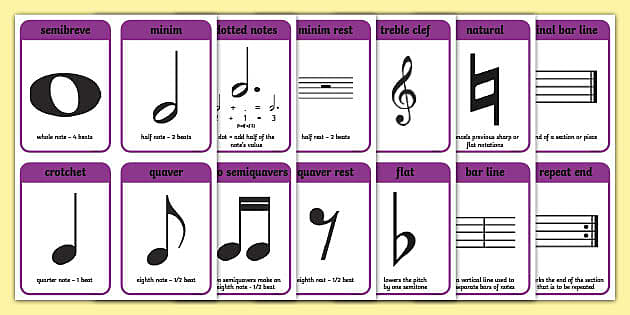MUSIC
INTRODUCTION TO MUSIC
Meaning of Music:
Music is the art of combining sounds in a way that is pleasant to the ear. It is a form of expression that uses rhythm, melody, and harmony to communicate feelings and ideas.
Music is a universal language that is understood by all people, whether young or old, black or white. Music can be sung or played using instruments. Music can be heard at home, school, church, mosque, market, party, and everywhere.
TYPES OF MUSIC
- Traditional Music: This is music passed down from ancestors. It is used for ceremonies like marriage, chieftaincy, naming, farming, festivals, and storytelling.Examples: Bata dance music (Yoruba), Ekombi (Efik), Egwu Amala (Igbo).
- Religious Music: This is music used in churches, mosques, and traditional shrines. Examples: Gospel music, Islamic chants, praise and worship, incantations.
- Art Music (Classical Music): This is formal and written music. It follows rules and is used in schools and concerts. It is taught in music schools.Examples: Orchestra, choral music, sonata.
- Popular Music: This is modern-day music enjoyed by young people. It includes hip-hop, afrobeat, fuji, highlife, reggae, and hip-life. Examples: Music by Fela Kuti, Burna Boy, Wizkid, Davido.
USES OF MUSIC
- Music is used for entertainment.
- Music is used for communication (e.g. drums speaking in Yoruba land).
- Music is used in religious worship.
- Music is used for education and learning.
- Music is used in advertisements and jingles.
- Music is used during festivals and cultural dances.
- Music is used in therapy and healing.
- Music is used in films, drama and stage performances
IMPACT OF MUSIC ON SOCIETY
- Positive Impact:
- Music Brings people together.
- It Teaches moral lessons.
- Music Promotes cultural heritage.
- Music Encourages peace and unity.
- It Serves as source of income (musicians, producers).
- Negative Impact:
- It Promotes immorality if lyrics are bad.
- Music Can cause noise pollution.
- Music Can distract students from reading.
- Music Can lead to violence if not well guided.
VALUES OF MUSIC
- Music promotes discipline and teamwork.
- Music teaches patience and endurance.
- Music builds creativity and imagination.
- Music encourages hard work and consistency.
- Music helps to develop talents and skills.
- Music teaches cultural identity and pride.
ELEMENTS OF MUSIC
- Melody: The tune of the song.
- Rhythm: The pattern of beats and silence.
- Harmony: Combination of two or more notes sounding at the same time
- Dynamics: The loudness or softness of music.
- Tempo: The speed of the music.
- Pitch: The highness or lowness of sound.
- Timbre: The quality or tone of a sound.
SETTING WORDS TO SOLFA NOTATION
Setting words to solfa means arranging lyrics or words of a song to corresponding solfa syllables like: Do, Re, Mi, Fa, So, La, Ti, Do
therefore Solfa notation is the use of syllables like:
d (do), r (re), m (mi), f (fa), s (so), l (la), t (ti)
Example:
Let’s take a simple song and set it to solfa.
Song:
"I love my Nigeria, my fatherland"
Solfa:
- d d r m | f f m r |
- d m r d | t d r d ||
Steps
- Read or sing the sentence aloud.
- Count the syllables.
- Match each syllable with a note.
- Use vertical lines to separate phrases.
Note:
- Each word must match the number of syllables.
- Each syllable gets one solfa note.
- Time signature must be followed.
SINGING TECHNIQUES
- Proper posture – Stand or sit upright.
- Correct breathing – Breathe from the diaphragm.
- Clear diction – Pronounce words well.
- Pitch accuracy – Stay in tune.
- Good phrasing – Observe punctuation in music.
- Expression – Sing with feeling and emotions.
Nigerian Folk Songs
Folk songs are traditional songs passed from generation to generation.They are often sung in native languages and used for work, play, praise, and worship.
Examples:
- Yoruba: “Orin aro”.
- Hausa: “Wakar biki”.
- Igbo: “Nkwa egwu”.
- Tiv: “Swange”.
MUSICAL INSTRUMENTS
- Idiophones: Instruments that produce sound by shaking or hitting themselves.Examples: Gong, xylophone, bell
- Membranophones: Produce sound by stretching a skin or membrane. Examples: Talking drum, conga
- Aerophones: Sound is produced by blowing air. Examples: Flute, trumpet, saxophone
- Chordophones: Use strings to produce sound. Examples: Guitar, violin, piano
- Electrophones: Use electricity to produce sound.Examples: Keyboard, electric guitar
MUSIC NOTATION (STAFF, NOTES, AND VALUES)
The Music Staff
It is made up of five lines and four spaces where music is written.
Notes and Time Values
- Semibreve (Whole Note) – 4 beats.
- –Minim (Half Note) 2 beats.
- Crotchet (Quarter Note) – 1 beat.
- Quaver (Eighth Note) – ½ beat.
- Semiquaver (Sixteenth Note) – ¼ beat.
EAR TRAINING
- Singing solfa: Do, Re, Mi, Fa, So, La, Ti, Do.
- Sight singing: Reading and singing notes correctly.
- Interval training: Knowing the distance between notes.
- Tonic solfa drills: Practicing major scales.
CAREER OPPORTUNITIES IN MUSIC
- Music teacher.
- Music producer.
- Choir director.
- Instrumentalist.
- Sound engineer.
- Composer/songwriter.
- DJ or OAP.
- Band manager.
- Vocal coach.
- Music therapist.
Assignments and Practice
- Define music in your own words.
- List 5 uses of music in your environment.
- What are the 7 solfa syllables?
- Write the solfa for “I love my country”.
- Name 4 careers in music.
- Mention 4 traditional instruments used in Nigeria.

